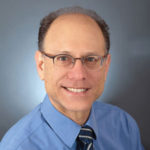The Self-Healing Benefits Of Meditation

By Susan Piver
We all know that regular, moderate exercise is good for us. But imagine what it would be like if all you did was exercise: if you ran, walked, jumped, or lifted 24 hours a day. After only a very short while, exercise actually wouldn’t be that good for you because without rest and self-healing, exercise becomes counterproductive and even risky…and so it is with your mind. We spend all day (and sometimes all night, too!) in a whirlwind of thought. When there isn’t something particular to think about (what to eat for breakfast, the tasks of the day, or what you’re going to say in an upcoming meeting), we search restlessly for something to fill the gap-worries, hopes, television, and so on. We never allow our minds to rest. And without this precious self-healing time, our minds become exhausted and thoughts less trustworthy. Just as we need to stop moving our bodies every once in a while, we also need to stop moving our minds. But how? The idea can actually seem terrifying, not to mention impossible.
But it is quite possible. The practice of self-healing meditation is just this: resting the mind in silence and space, allowing it time to recover and rejuvenate. Healing meditation does not mean sitting in a perfect state of peace while having no thoughts. Big misconception! Instead, meditation for healing is about establishing a different relationship with your thoughts, just for a little while. Instead of attention being drawn off by whatever thought happens to present itself, in meditation, you watch your thoughts from a different, more stabilized perspective. You’re training yourself to place your attention where and when you want. This is very powerful. It gives you the ability to direct your thoughts (and mood) in more productive and peaceful directions. And, as has been demonstrated in the last few years, this ability has profound self-healing implications for physical and mental health.
Over the last 10 years, Buddhist leader the Dalai Lama has been engaged in formal top-level dialogues with leading scientists and brain researchers from M.I.T., Harvard, the University of Wisconsin, and others. Until several years ago, these annual conversations were held in private as simple but powerful inquiries into each other’s methods for understanding the mind. Recently, the results of this dialogue, and resulting studies into meditation for healing have been made public, and they’re fascinating.
When studying the brainwaves of meditating monks, Dr. Richard Davidson, director of the Laboratory for Affective Neuroscience at the University of Wisconsin, found that brain circuitry is different in long-time meditators than it is in non-meditators. Here’s how: when you are upset – anxious, depressed, angry – certain regions of the brain (the amygdala and the right prefrontal cortex) become very active. When you’re in a positive mood these sites quiet down and the left prefrontal cortex – a region associated with happiness and positivity – becomes more active. In studying meditating monks, Davidson found they had especially high activity in this area.
One of the things that is so amazing about this finding is that for a long time, scientists thought that each individual was wired with certain “set-points” for happiness, depression, and so on. This study shows that the brain can rewire itself and alter its set points – simply by the self-healing power of thought.
We’ve all read reports that stress can affect health and immunity including the body’s abilkity for self-healing; Dr. Weil has emphasized this repeatedly. An ulcer, for example, has direct correlation with emotional stress. An ulcer, simply defined, is the presence of certain bacteria in the stomach, plus stress. Other conditions have a noted relationship to stress, such as heart disease, lowered immunity, diabetes, and asthma. The acute stress that results from almost being hit by bus or thinking your house may have been broken into is not the kind of stress that has deleterious affect. This kind of stress mobilizes your emergency responses and capabilities. But, according to neuroendocrinologist Dr. Robert Sapolsky, Professor of Biological Sciences, Neurology and Neurological Sciences at Stanford University, chronic stress is a different story. There is evidence that it shrinks neurons on the hippocampus, a part of the brain involved in learning capacity, memory, and positive mood. The self-healing hippocampus has the ability to regenerate, if stress is discontinued. And healing meditation reduces stress, as shown in Dr. Davidson’s research.
Medical research has shown that there are two main contributing factors to depression: a genetic predisposition, and environmental factors such as stress, loss, and trauma. The first factor, genetics, is not within our control. The second, however, is. We can’t prevent loss and difficulty, but we can significantly alter our reactions to them. Zindel Segal, Chair in Psychotherapy in the Department of Psychiatry at the University of Toronto, a pioneer in Mindfulness Based Stress Reduction (MBSR) has shown that MBSR participants are 50% less likely than other patients to relapse once depression is alleviated through medications and other therapies. This is because meditation teaches us, thought by thought, to alter our responses to stress, thereby increasing serotonin production, a neurotransmitter that influences mood, sleep, and appetite. Anti-depressants such as Prozac and Paxil, so-called SSRIs (selective serotonin re-uptake inhibitors) are drugs that increase serotonin.
As mentioned, meditation is often viewed as a way to relax — and it is. But it’s also a very precise strategy for maintaining health and training the mind in keen observation, increased power of concentration, and emotional stability.
It’s important to learn healing meditation from an accredited source. Although it’s a very simple practice, it’s also quite precise. Please visit my website, www.susanpiver.com, for a listing of resources.
Learn more about self-healing or visit Dr.Weil’s Q&A Library for more valuable health-related information.














